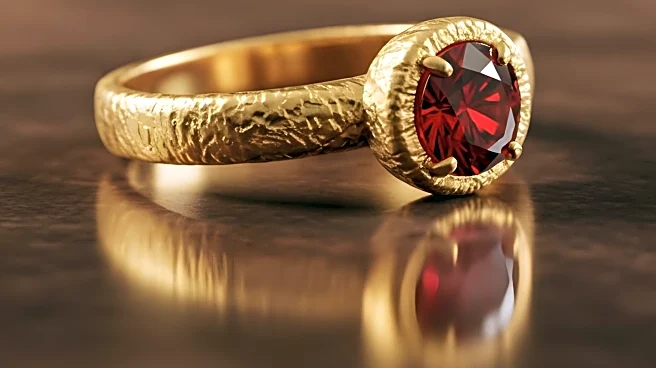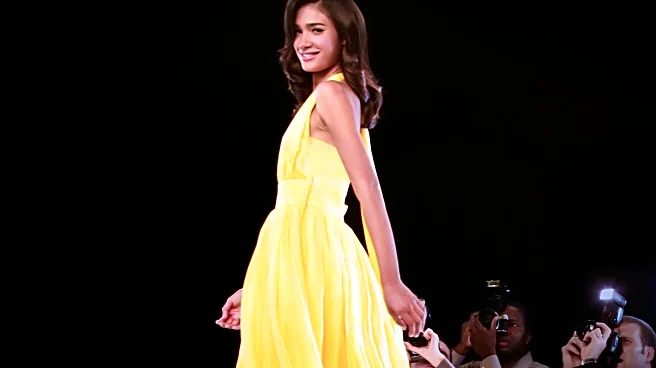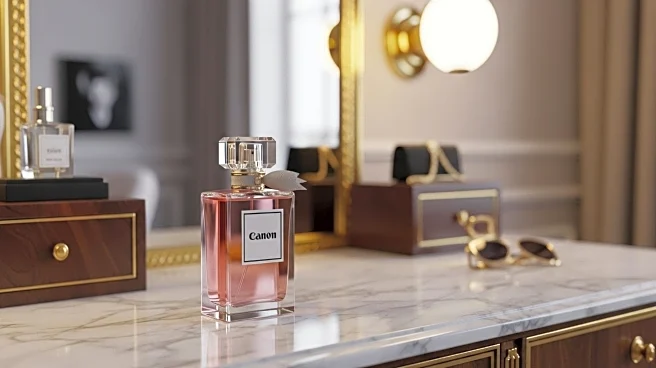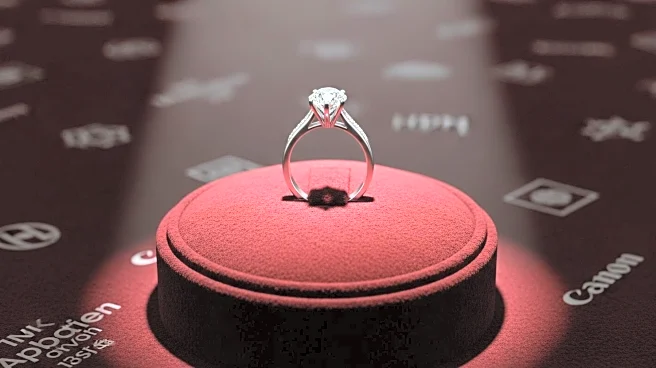What's Happening?
The Khoki collective, a Tokyo-based group of anonymous designers, showcased their latest collection at the Tokyo Spring 2026 fashion event. Known for their emphasis on teamwork and creativity, the collective introduced unique items such as shrink-wrapped metal cutlery integrated into leather bags and miniature sewing kits sealed in leather card cases. These designs reflect the collective's values of craft, familiarity, whimsy, and teamwork. The collection also featured garments with Shibori, a traditional Japanese tie-dyeing technique, creating colorful patterns across various clothing items. The collective has expanded its team from three to six members, allowing for fresh ideas and innovative designs.
Why It's Important?
Khoki's approach to design highlights the importance of collaboration and innovation in the fashion industry. By integrating traditional techniques like Shibori with modern design elements, the collective is pushing the boundaries of fashion creativity. Their work not only contributes to the cultural richness of the fashion world but also sets a precedent for how teamwork can lead to groundbreaking ideas. This can influence other designers and brands to adopt similar collaborative approaches, potentially leading to more diverse and innovative fashion trends.
What's Next?
The Khoki collective plans to continue exploring new design concepts and expanding their team to foster more creativity. As they gain recognition, their unique approach may attract collaborations with other designers and brands, further influencing the fashion industry. The collective's emphasis on teamwork and innovation could inspire other fashion houses to adopt similar practices, potentially leading to a shift in how fashion collections are developed.
Beyond the Headlines
Khoki's designs challenge conventional fashion norms by blending traditional techniques with modern aesthetics. This approach not only enriches the cultural tapestry of fashion but also raises questions about the role of tradition in contemporary design. As the collective continues to innovate, they may influence broader cultural discussions about the preservation and evolution of traditional crafts in modern contexts.











